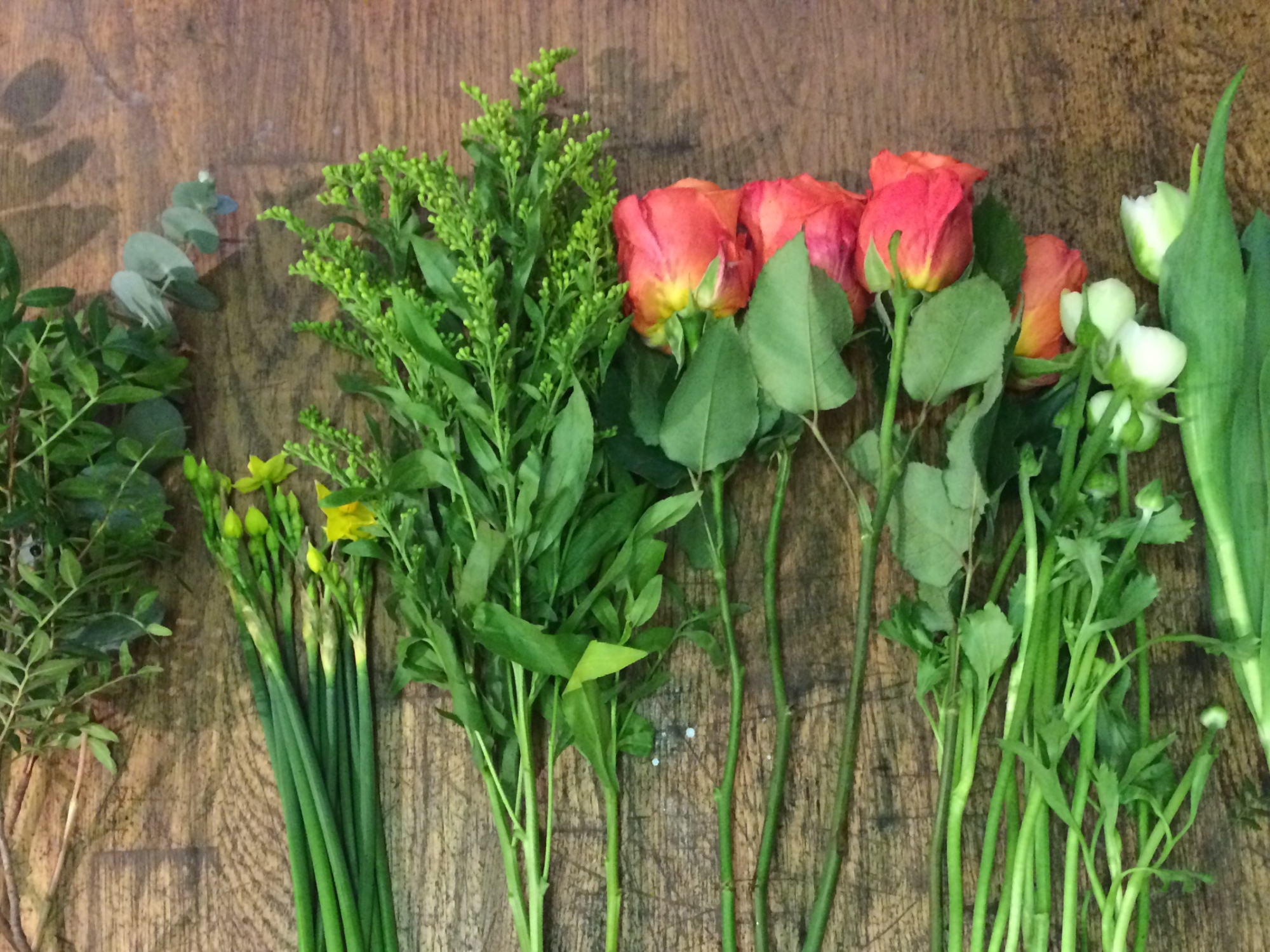In the shop we pride ourselves on our hand-ties. I have a a very particular style, rather like a signature dish, as do each of our florists and we always get people commenting on how stunning they are.
In the past, before hand-ties became popular, florists would supply ‘flat bouquets’ – a selection of flowers and foliage, with long stripped stems, wrapped in a big sheet of cellophane and tied off with a huge bow made of plastic ribbon. These were the raw ingredients which allowed the recipient to arrange the flowers and foliage themselves, however there is skill and a knack to doing this correctly, not only to get the best result but also to ensure the flowers last as long as possible.
The ‘hand-tie‘, artistically arranged bouquets of flowers and foliage, revolutionised floristry, making breathtakingly beautiful arrangements instantly available for anyone to brighten their home and wow their guests.
You can always pop into the shop and pick up a ready made bouquet, but if you fancy having a go yourself, read on….
First, let’s dispel some old wives tales:
- DO NOT bash flower stems with a anything heavy such as a hammer or rolling pin.
This will crush the capillaries and prevent water and nutrients reaching the leaves and the flower head, causing them to wilt and discolour.
- DO NOT strip stems with a potato peeler.
Flowers and foliage are living things, they need care and attention. Scraping them with a potato peeler will cause injury and infection, please don’t do this.
- DO be gentle when handling stems.
- DO remove leaves from below the water line, carefully.
Hand-tied bouquets can come in any size but the main ingredients should include at least;
- One feature flower, the show stopper, the leading lady.
- A supporting actor/actress, smaller flowers that will help the main flower shine.
- Two types of foliage, the all important cast.
Foliage is a very important part of any bouquet and often under-rated. There are many many types of foliage used in floristry, each with different leaf sizes, different shades, tones and textures. Foliage does not come cheaply, but it is the key ingredient that sets the overall style of the bouquet. In the Flower Shop we take foliage very seriously, as any good chef will tell you, your ingredients are of upmost importance, there’s no point splashing out on a star ingredient and then cutting corners on the accompaniments, however nicely arranged.
To help you create the perfect hand-tie of your very own I’ve made this little video showing Pulborough Florist Rachel making up a fairly simple, but stunning hand-tie bouquet. She’s pretty quick, but we have speeded this up slightly.
If having a go for the first time allow yourself plenty of time, choose the very best ingredients (available from The Flower Shop, Pulborough) and lay all the elements you are going to need, out in advance. Remember once you get going, you’ll only have one hand free and be gentle.

That is a fantastic tutorial! Thank you! You make it look easy of course, but I have a better idea now. For instance I have always arranged in the vase, not holding the bunch, but I see how building up from the centre works.
LikeLike
I’m delighted this helped and plan do some more, building larger bouquets and small posies. Spiralling ensures there is a small amount of space between each flower/stem, making the arrangement more visually attractive, while also protecting flowers against bruising or crushing. Have a look how a couple of amateurs got on in our Floral Invention Test https://www.facebook.com/theflowershoppulborough/photos/a.1726650627556672.1073741830.1580998062121930/2152305321657865/?type=3&theater
LikeLiked by 1 person